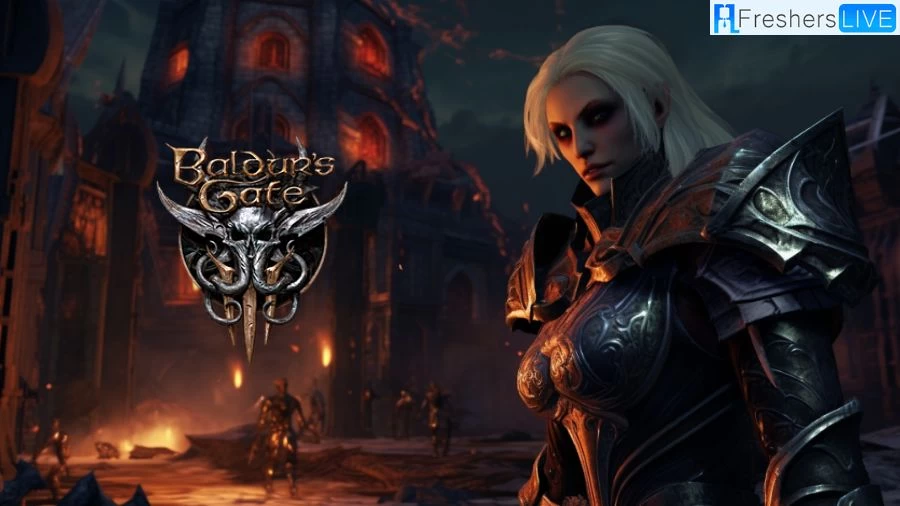Baldur's Gate 3 Underdark Map, Baldur's Gate 3 - All Underdark Entrances and How to Get In?
by Rubaditsha
Updated Aug 09, 2023

Baldur's Gate 3 Underdark Wiki
The Underdark in Baldur's Gate 3 serves as a substantial and intricate location within Act 1, recommended for adventurers around level 5. Nestled beneath the Blighted Village, the Underdark offers a captivating array of sub-areas and intriguing quests. Notable sub-locations include the Selune Outpost, Ebonlake Grotto, Selunite Temple, Decrepit Village, Dread Hollow, Arcane Tower, and Myconid Colony. Each area presents unique challenges and opportunities for exploration.
The Underdark introduces several noteworthy NPCs and merchants. Notable among them are Blurg, stationed at the Myconid Colony, Omeelum, Sovereign Spaw, and Thulla. These characters play roles in the unfolding narrative and interactions within the depths.
Amidst the cavernous expanse lie significant items of interest. Seek out Phalar Aluve, The Great Furnace of Grymforge, Scroll of Invisibility, and Sussur Tree Bark. These items may prove invaluable on your journey through the Underdark.
Navigating the Underdark involves engaging with a diverse array of quests, each contributing to the rich tapestry of storytelling. Embark on quests like Travel to Moonrise Towers, Find the Nightsong, Cure the Poisoned Gnome, Find a Cure, Find the Mushroom Picker, Save the Grymforge Gnomes, Defeat the Duergar Intruders, Avenge Glut's Circle, and Finish the Masterwork Weapon.
These quests drive your progress and interactions with the various denizens of the dark realm. To traverse into the Underdark, a hidden access route within the Shattered Sanctum unveils itself. This requires a return to the Goblin Camp to eliminate residual enemies and an encounter with Warrior Trinzas, stationed at the entrance.
Having quelled the goblin leaders and rescued Halsin, the tension escalates as the goblins turn hostile, leading to a confrontation with Warrior Trinzas and accompanying adversaries.
Baldur's Gate 3 Underdark Map
The Underdark is a significant location in Baldur’s Gate 3 Act 1, offering players the opportunity to explore, gather loot, complete quests, and advance the main storyline. The Underdark map is divided into several key areas and landmarks, each with its own set of quests and challenges.
To access the Underdark, players have several methods:
In summary, the Baldur's Gate 3 Underdark is a complex and engaging location within Act 1, offering players various quests, challenges, and opportunities for exploration and loot acquisition.
Baldur's Gate 3 - All Underdark Entrances and How to Get In?
Baldur's Gate 3 offers a captivating realm known as the Underdark, lying beneath the surface of the main map. This fantastical and vividly colored domain boasts unique inhabitants, environments, and questlines that add depth to the game's narrative.
Accessing the Underdark is pivotal, not only for exploration but also for progressing to Act 2, providing an alternative route to bypass the mountain pass. The Underdark entrances in Baldur's Gate 3 are diverse, each offering its own challenges and mysteries to unravel.
Here are the four ways you can enter the Underdark:
Once within the Underdark, a plethora of captivating locations awaits exploration, including the Mycanoid Colony, Grymforge, Adamantine Forge, and Arcane Tower. It's advisable to ensure your party reaches a level of at least 3-4 before delving into the Underdark, as its formidable inhabitants pose a significant challenge for those who are underleveled.
For an extensive guide encompassing all facets of Baldur's Gate 3, from romance options and quest insights to character builds, explore our comprehensive Baldur's Gate 3 hub. It's important to note that any products mentioned were selected independently by our editors, and GameSpot may earn a portion of revenue from purchases made through our site.
Baldur's Gate 3 Gameplay
Baldur's Gate 3 is a versatile role-playing video game that introduces both single-player and cooperative multiplayer elements. Gamers have the liberty to craft one or multiple characters, assembling a party alongside computer-controlled companions to embark on an immersive narrative journey.
An innovative feature allows players to collaborate online, uniting their customized character with others to forge a formidable party. Unlike its predecessors, the game distinguishes itself by adopting a turn-based combat system, reminiscent of Larian's acclaimed titles Divinity: Original Sin and Divinity: Original Sin II.
This iteration, however, integrates the revered D&D 5th Edition ruleset, infusing the gameplay with the essence of Dungeons & Dragons' rich mechanics.
Baldur's Gate 3 Underdark Map: FAQs
Baldur's Gate 3 is a role-playing video game that provides both single-player and cooperative multiplayer experiences. Players can create characters and form parties to explore the game's story, either with computer-generated characters or by teaming up online with other players.
Players have the flexibility to craft one or more characters to participate in the adventure. They can choose companions from computer-controlled characters or collaborate with other players online to assemble a diverse party.
Unlike previous games in the Baldur's Gate series, Baldur's Gate 3 introduces turn-based combat, reminiscent of Larian's earlier titles like Divinity: Original Sin and Divinity: Original Sin II. However, this time, the combat system adheres to the rules of Dungeons & Dragons 5th Edition.
Yes, Baldur's Gate 3 offers both single-player and cooperative multiplayer modes. Players can choose to experience the game's rich narrative alone or team up with friends to face challenges together.
In multiplayer mode, players can join forces online and combine their characters to form a party. This cooperative approach allows for strategic gameplay and collaborative storytelling as players navigate through the game world.







